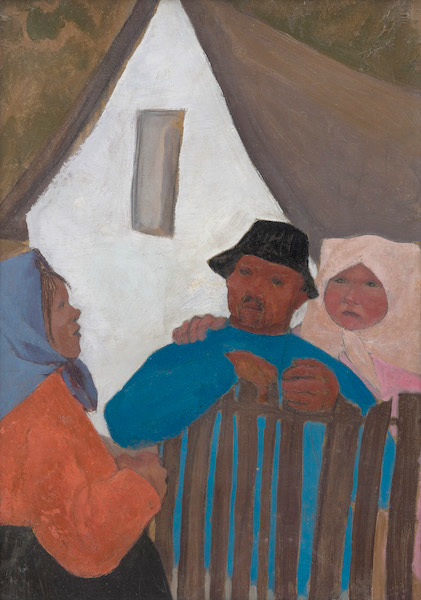Biography
Lenke Szemere or Madeleine Szemere grew up in Budapest in an assimilated Jewish family. In 1924 she attended the Academy of Fine Arts for a year where István Réti was her master, and by 1925 she was already filling two halls in the Ernst Múzeum with her works. Her work is met with great interest, almost everything is sold: one of the buyers was Dezső Kosztolányi. Because of the hopeless economic situation, she emigrated to Paris in 1930, where she found work as a fashion designer and met the Hungarian artist Zoltan Kemeny, whom she married in 1933. The couple became a team of fashion designers; In 1938, the newly founded Swiss fashion magazine Annabelle secured their collaboration. In 1940, she and Zoltan fled from the Germans to southern France. In 1942, they managed to escape to Switzerland, where they were both accommodated in camps. While Zoltan was released in 1943 and was able to work for Annabelle in Zurich, Lenke remained interned in western Switzerland until the end of the war. In isolation, she began painting and drawing intensively again and discovered the work of Jean Dubuffet. In 1947 she exhibited in Zurich for the first time (Galerie des Eaux-Vives), in 1949 she took part in the legendary CoBrA exhibition in Amsterdam, and in 1950 she showed her work in Paris. In order not to jeopardize her relationship with her now successful husband, she gave up painting in 1956, but continued to draw. After Zoltan's death (1965) she devoted herself entirely to manage Zoltan’s heritage. Her own work was rediscovered in the 1980s.
Heavy-blooded seriousness characterizes her early painterly work. With dark-toned depictions of marginal figures in society, farmers and rural scenes, the pupil of István Réti and Adolf Fényes anachronistically follows the realistic-romantic tradition. In the second half of the 1920s, naturalism gave way to rougher, flatter painting. Something essential is already present here: the interest in people in their bare existence. However, it found its unmistakable expression in the 1940s.
Dubuffet's demand for unreflective, unembellished expression strengthens the brilliant illustrator in her penchant for "art in raw form". The material itself becomes the medium of expression, her she painted with mixing media (e.g. sand). Children's drawings, folk and tribal art served as a source of inspiration for her. Female figures, mostly isolated and laden, with massive bodies, strikingly often with oversized, shovel-like hands and feet, move to the center of her pictorial world. At her 1947 exhibition in Zurich, critics were surprised at her primitivism since Art Brut was not yet a concept in this country. Through her patron Dubuffet and his Foyer de l'art brut in Paris, she came into contact with the international, avant-garde CoBrA movement. In 1953-54 her last phase of work begins with an extensive abstraction and subdivision of form. It is still female figures that occupy her, existential ciphers of one she has experienced first-hand. Her drawings and paintings can be found at the collection of the Hungarian Museum of Fine Arts.

